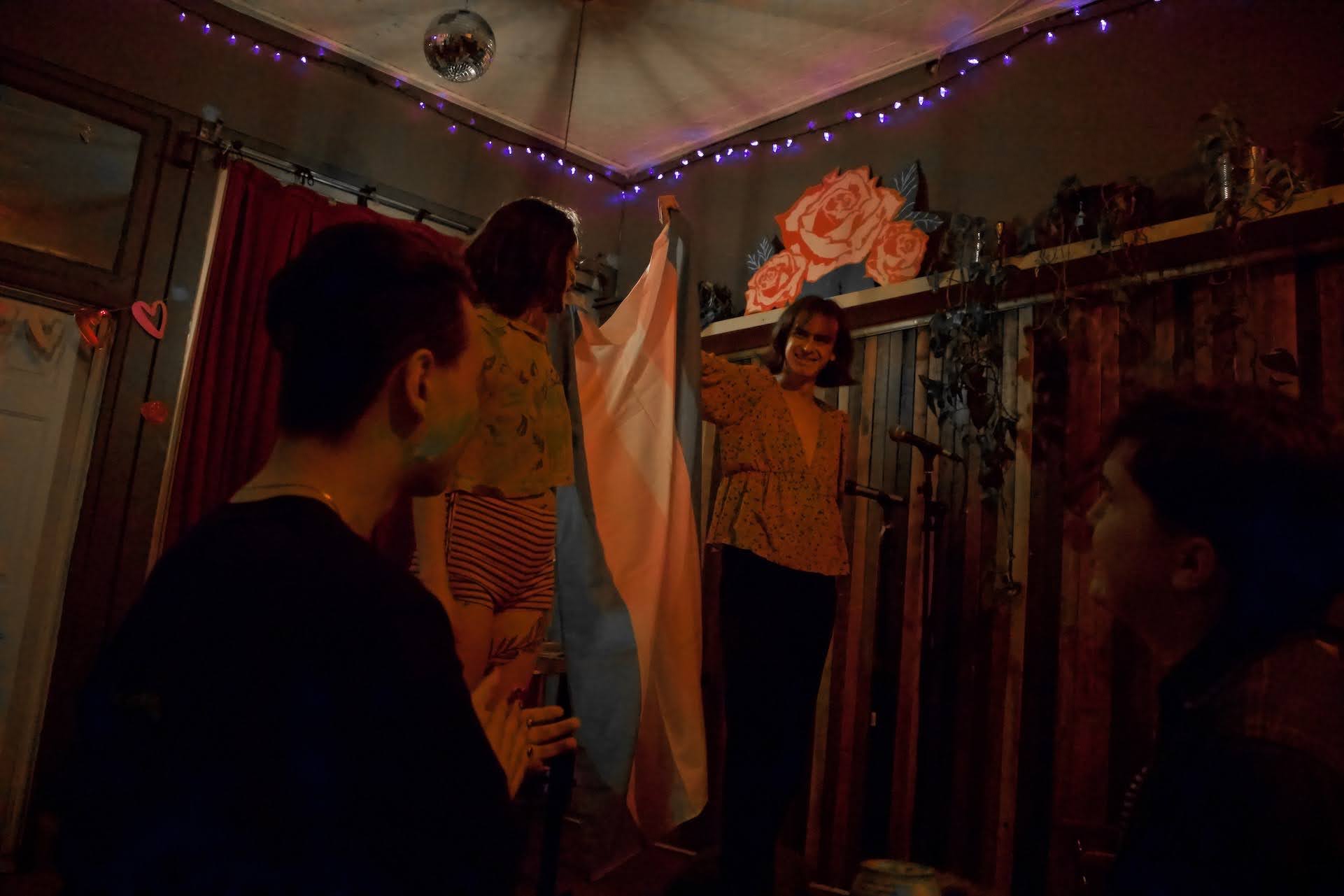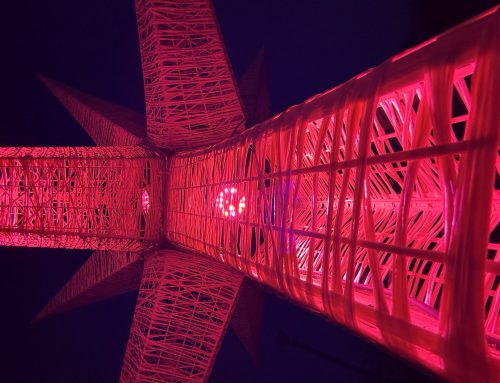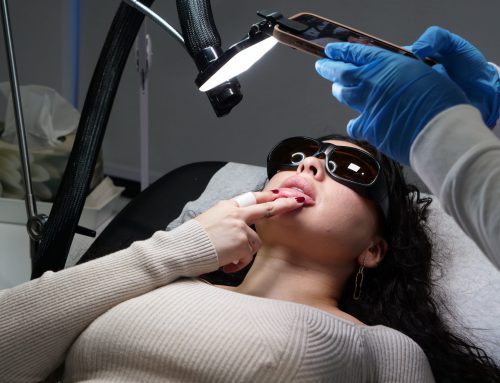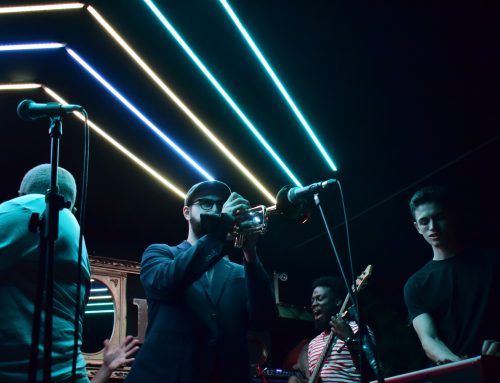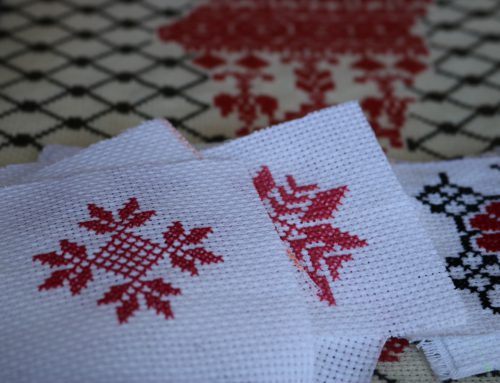BY Stella Mazurek
As Riley Evans hurries to click on the giant T.V.s that take up the walls like billboards, two of their closest friends, Ella Poirier and Nia, make themselves at home at the bar, sneaking behind the counter to pour themselves soft drinks.
The neon-tinted air smells like beer, the clinking of pool balls resonates and there is rainbow decor everywhere. The bar isn’t open yet, but already on this Thursday night, there are long-haired, face-pierced, tattoo-clad folk waiting to be let in.
“Most of my queer friends, I’ve met through dating apps,” admits Nia, who has requested we keep their last name confidential while they complete the immigration process from their homeland, where homosexuality is a crime punishable by death. “I’m just 27 and most of the events I look around at, I think I’m too old [for].” On these bar stools, however, she feels welcomed.
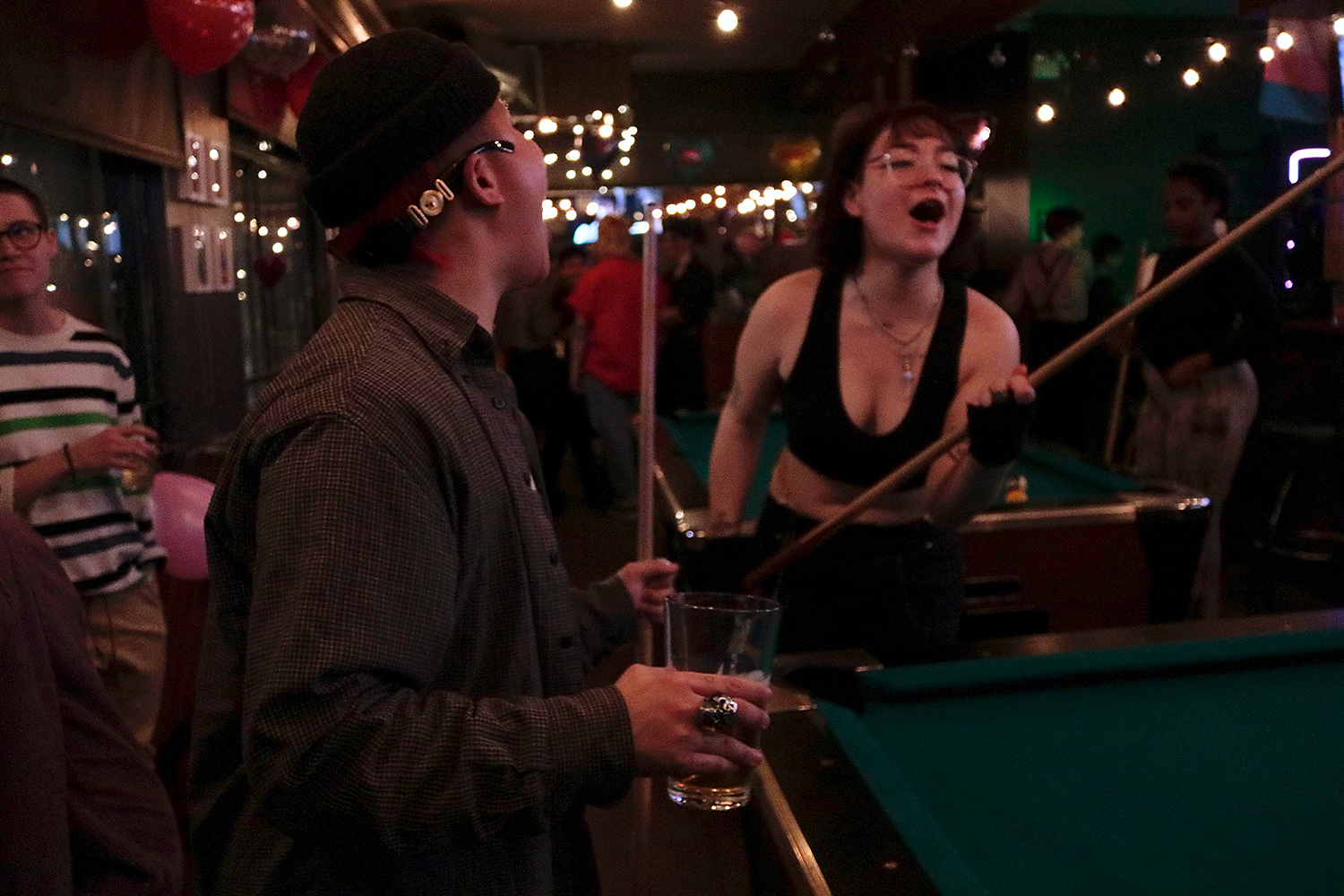
Champs Sports Bar hosts a pool tournament on Valentine’s Day for its weekly Dyke Night held on Tuesdays. Photo by Mazurek.
One might imagine this scene of lesbians, queer people and non-binary individuals coming together unfolding at an establishment in Montreal’s Village (formerly known as the Gay Village).
However, this is not the present reality. Touted as an LGBTQIA2S+ mecca and the ‘San Francisco of Canada’, Montreal currently has a severe lack of fixed lesbian and queer spaces.
“We have experienced a lot of lesbian events and sapphic gatherings, but we don’t get the opportunity for variety and we don’t get the opportunity to have a fixed space.” -Riley Evans
As Montreal’s queers and lesbians continue to use creative solutions, outside of the Village the number of safe spaces for their community is growing. Art, in particular, allows queer people to pursue autonomy and find a voice in a hetero-normative-centered society.
How social media is helping Montreal’s LGBTQIA2S+ arts scene reach more people and tap into wider audiences. Video by Stella Mazurek.
“We have experienced a lot of lesbian events and sapphic gatherings, but we don’t get the opportunity for variety and we don’t get the opportunity to have a fixed space,” explains Evans, who works as a bartender at Champs Sports Bar.
“It feels very much like fleeting enjoyment, and it’s hard to form a community based on just moments alone.”
Champs, located in the Plateau neighborhood on Boulevard Saint-Laurent, has become a staple gathering point for Evans, Poirier, and Nia.
None of them ever felt quite at home in the Village. Seeing untapped potential in Champs while drinking there one night, they approached one of the bar’s recently new owners, Sarah Fobes.
“Nia had the idea, Riley had the bar, and I had the planning skills,” recalls Poirier. Champs—which now hosts drag race watch parties, lesbian oil wrestling tournaments, and ‘Queeraoke’ live performances—has recently become well-known among the lesbian, queer, and non-binary communities in Montreal.
Bo Cohen, co-owner and individual of many hats at Notre Dame Des Quilles, explains the Village has historically struggled to cater to certain intersections of the LGBTQIA2S+ community.
“I was getting disillusioned with the way things were there. [I]t just seemed like pink capitalism, all of the old values […] were getting completely sucked out of it.” -Bo Cohen
Situated on the border of Montreal’s Mile End and Little Italy neighborhoods, NDQ has been a safe space for the queer and trans community for over a decade.
Cohen, who once lived in the village, explains, “I was getting disillusioned with the way things were there. [I]t just seemed like pink capitalism, all of the old values […] were getting completely sucked out of it.”
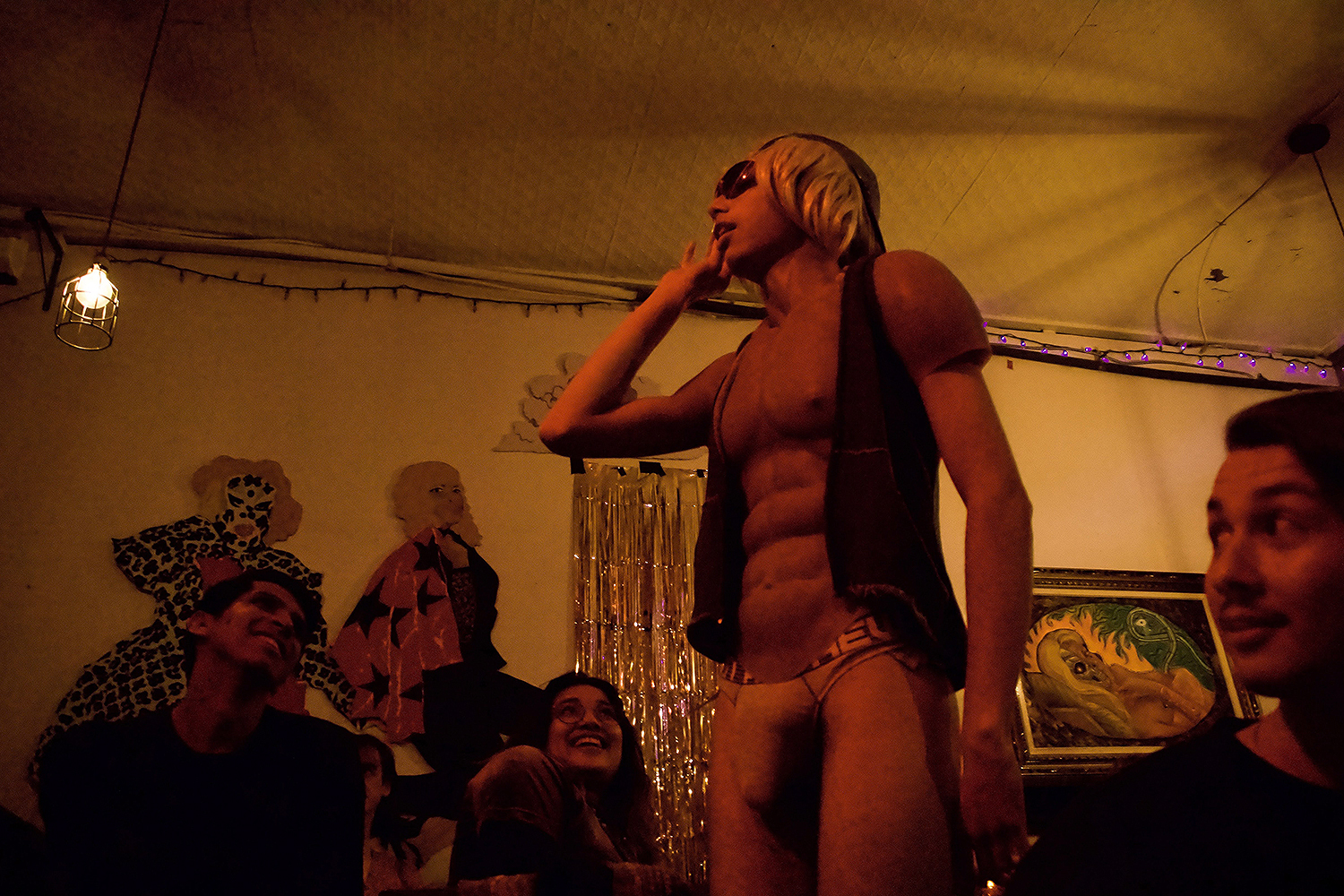
Drag artist JackStrapp performs as part of the Queer Joy event, a fundraiser for Autumn Trainor’s transfeminine transition held at Notre Dame des Quilles. Photo by Mazurek.
In the early 2000s, many non-binary and queer people felt similarly to Cohen and began to migrate to the Plateau and Mile End, where they could build the spaces they lacked for themselves.
“I consider this to be a D.I.Y. space,” says Cohen, sitting in the house plant-clad dive bar furnished with second hand chairs.
NDQ was built up from bare bones using a feisty, non-conforming spirit, explains Cohen.
“When the original owners took this space, they didn’t have hundreds of thousands of dollars to invest in it,” says Cohen, “you can see the legacy of that […] that’s what I’m trying to continue here.”
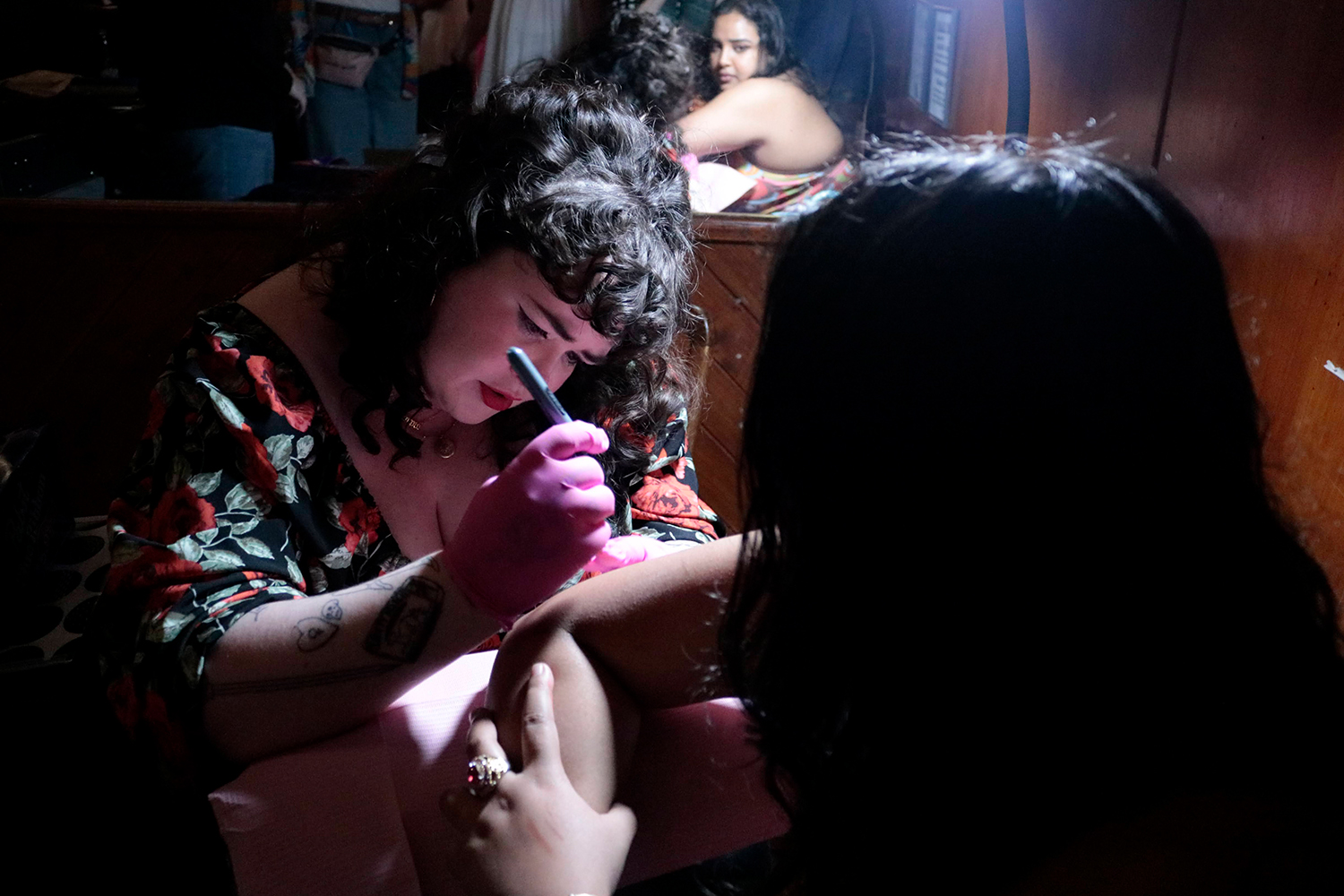
Mot Collins tattoos an attendee of the Saturgays party at Champs Sports Bar. Photo by Mazurek.
Well over a decade later, NDQ is still hosting drag open stages, latinx dance parties, and lesbian speed dating.
However, NDQ’s success story is an exception.
Over the past fifty years, many lesbian bars and queer spaces have struggled to stay open for longer than a decade. Magnolia, Royal Phoenix, and The Drugstore are all examples of briefly beloved, short-lived lesbian and queer establishments that once thrived in the city.
Since its closure in 2013, The Drugstore remains empty and abandoned. Now the Ping Pong Club, this bar on Saint-Laurent was once the Royal Phoenix. Photo by Stella Mazurek.
Alexandra Ketchum, faculty lecturer at the Institute for Gender, Sexuality, and Feminist Studies at McGill University explains that Montreal shares this struggle with most North American cities.
“Oftentimes cis women will drink less than cis men in terms of alcohol consumption,” explains Ketchum. Because they’re spending less at the bar, they aren’t a money-making demographic for nightlife establishments.
“Many women, when they’re in [queer] relationships stop going out as much,” she adds. “Whereas a lot of cis, gay men in relationships will often continue to go to party spaces, even if they’re in a monogamous couple.”
These factors help explain why the Village has chosen to cater to a more cis, white, gay male demographic as it maximizes profit, explains Ketchum.
Another big reason lesbian and queer spaces struggle to get off the ground and experience long-term success is the wage gap.
“Overall, women still make far less money than men,” says Ketchum, who studies lesbian and queer women’s space creation and community building.
“It’s just harder for women to start these businesses and they’re usually doing so with less startup money,” explains Ketchum, who recently published Ingredients For the Revolution, a book that looks at the history of women and feminist-run restaurants, cafes and coffeehouses across North America.
Ketchum explains not being able to share spaces with the historically established gay male community has both its upsides and downsides for the LGBTQIA2S+ scene at large.
As queer and lesbian communities become more widespread throughout cities, they gain more societal acceptance, she explains.
“[If] you can go to any bar and go to any restaurant […] why do you need specific [queer and lesbian] ones?”
However, Ketchum notes the downside to having LGBTQIA2S+ specific spaces dispersed throughout the city and not confined to a certain neighborhood is that community building, intergenerational sharing of stories, and connections with elders are lost.
Current Queer/Lesbian Venues in Montreal. Map by Stella Mazurek.
Nia is experiencing this struggle first hand.
“We’re trying to connect with the older lesbians and older sapphic people,” says Nia. “We want to know how they hung out in the past and what they can teach us about creating spaces now.”
It’s no easy feat, they explain, but with every event they organize alongside their friends, they see the hard work pay off.
After approaching the Village’s Society for Commercial Development over several weeks, we were unable to obtain a comment on our story.
